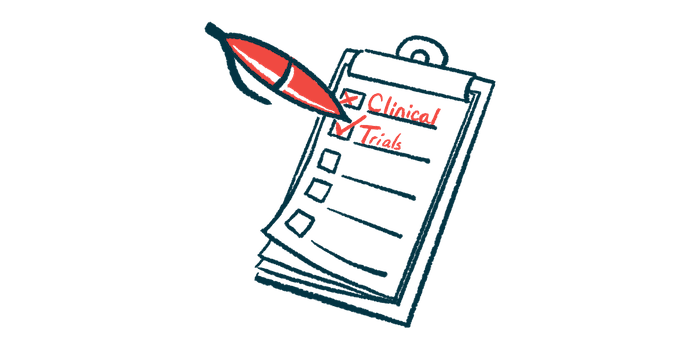First patients enrolled in pivotal trial of light therapy for Parkinson’s
PhotoPharmics’ Celeste device seeks to reset body's circadian rhythm

The first 25 patients have been enrolled in a Phase 3 trial that’s testing the light-based, at-home therapy device called Celeste for treating Parkinson’s disease, its developer PhotoPharmics has announced.
The “Celeste Light for PD Trial” is evaluating the device’s safety and effectiveness at easing both motor and nonmotor symptoms of Parkinson’s and its capacity to improve quality of life when used once daily for an hour during usual evening activities at home.
“We knew awareness of this new approach was high among the Parkinson’s community, but when we started recruiting, we were overwhelmed by the volume of applications to participate in this pivotal trial,” Kent Savage, PhotoPharmics’ president and CEO, said in a press release. “After a tremendous amount of work, we are pleased to announce the enrollment of the first 25 patients in the Celeste Light for PD Trial, marking a pivotal moment in our journey to revolutionize [Parkinson’s disease] care.”
Along with motor symptoms, such as tremors, muscle rigidity, and slowness of movements, Parkinson’s also features nonmotor symptoms that can include cognitive impairment, sleep disturbances, pain, and emotional or mood changes.
The circadian rhythm — the body’s “natural clock” that regulates essential functions such as sleep, rest-activity rhythm, or metabolism — is poorly regulated in people with Parkinson’s and is associated with both motor and nonmotor symptoms.
Celeste uses a combination of light intensities and bandwidths that target the eyes’ photoreceptors, that is, light-sensitivity receptors in the back of the eye, that are responsible for the circadian rhythm to offer a noninvasive treatment for the unmet medical needs of the disease, particularly nonmotor symptoms for which there are no approved therapies.
“People with Parkinson’s have told us they need answers for these debilitating symptoms that aren’t well treated with current medicines and the last thing they want is another drug,” Savage said. “So, our goal has been to provide a noninvasive therapy that would significantly improve Parkinson’s symptoms beyond what is currently available.”
Testing light therapy’s effect on Parkinson’s nonmotor symptoms
This therapy is meant to be used alongside other treatments and doesn’t require any changes to them. In preclinical studies, light therapy was suggested to improve the circadian rhythm and to help ease the disease symptoms.
An earlier clinical trial (NCT02175472) sponsored by the company evaluated the therapy’s efficacy in 92 patients, ages 45 and older, under stable dopamine replacement therapy for at least a month. The patients received treatment using either the Celeste device or a similar device that produced light not believed to have a therapeutic effect.
Patient- and clinician-reported outcomes indicated the therapy eased disease severity and nonmotor symptoms, and improved patients’ quality of life.
The Light for PD trial is expected to enroll up to 300 patients and will be evaluated in a telemedicine format to enhance its accessibility and convenience, allowing patients in remote areas to be included. Developed with the Center for Health + Technology (CHeT) at the University of Rochester Medical Center in New York, the trial is intended to advance research and treatment of people with Parkinson’s.
“As patients reported in our prior trial, this may be the first treatment that improves a broad set of functional abilities in [Parkinson’s disease] when administered on top of current medication. We recently presented our new trial design to the FDA with a favorable review,” said Dan Adams, chief science officer at PhotoPharmics.
The trial’s main goal will be to evaluate the changes in motor and nonmotor symptoms, using the Movement Disorders Society-Unified Parkinson’s Disease Rating Scale Part I to III, after six months of treatment. Secondary measures include the global impression of improvement – a clinician’s view of patients’ functioning – patients’ reported outcomes, and changes in sleep patterns and daytime sleepiness.
The company also plans to investigate light-based treatment for other neurodegenerative diseases, including Alzheimer’s and Huntington’s diseases.
The Celeste phototherapy device was designated a breakthrough device by the U.S. Food and Drug Administration (FDA) in 2020. The designation is given to medical devices that may be able to provide more effective treatment for life-threatening or debilitating diseases.







